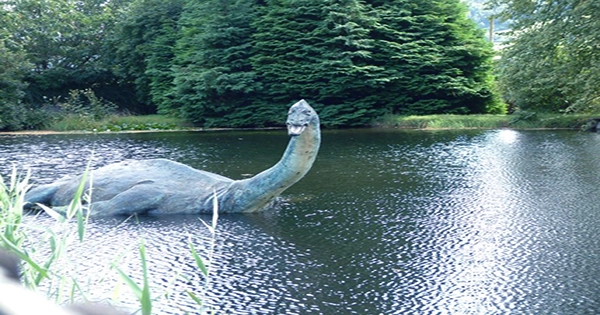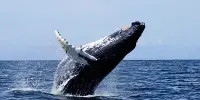One of the scientific method’s core ideas is that if fresh data proves you wrong, you should confess it and revise your worldview. We’ll admit it: we were mistaken. There is proof that the Loch Ness Monster exists. See that? What’s that watery V shape? Nessie’s the name. Or at least, according to the English couple who captured the rather lackluster clip, it may be. “I honestly have no idea what was in the water.” It was a substantial item. The wife, who, like her husband, desires anonymity, told the Daily Mail, “I don’t believe it truly reflects on the video precisely how enormous it was.”
“From what we could tell,” she continued, “it was between 20 and 30 feet long.” If you’re having trouble seeing the degree of detail in the video, don’t worry: the couple claims it was much more remarkable in person. The “monster” was apparently “propelling itself with something,” maybe a fin or arm, which it utilized “like an oar.” The beast apparently featured Nessie’s plesiosauroid body structure, replete with “lumps or humps or whatever they are” that “kept vanishing beneath the water,” according to the lady.
Some skeptics may refer to the numerous cases in which prior “sightings” of the coy cryptid have turned out to be more ordinary forms of local fauna, such as seals, fish, or *checks notes* logs. However, according to Gary Campbell, Keeper of the Official Loch Ness Monster Register, this is some of the most compelling evidence he’s ever seen in support of the monster’s existence.
“In the past, there have been two or three extremely fantastic videos,” Campbell told the Mail. “However, this is up there with the greatest of them.” It’s fantastic when something truly incomprehensible comes along.” Of course, most scientific breakthroughs of this scale should be subjected to rigorous peer review. While Campbell has the expertise (he’s spent the last 26 years of his life tracking sightings of the 1,500-to-180,000,000-year-old Scottish inhabitant), the duo welcomes the further scientific investigation, telling the Mail that they’d “certainly love for somebody to evaluate the film.”
“It would be our utmost joy if it helped anyone figure out what’s under there,” the woman told the Mail. “That would be fantastic.” In this case, we have good news for the couple: the film has been studied by Dr. Darren Naish, a zoologist and author of Hunting Monsters: Cryptozoology and the Reality behind the Myths. “I’m guessing they’re ducks,” he remarked of the video.
Despite the fact that there is no official Loch Ness Duck Register, Naish told the Mail that the footage revealed “unidentifiable specks in the water.” “There’s no indication that we’re seeing anything particularly enormous or unusually shaped,” he explained. “The things must be little – I estimate less than 50cm [19.7 inches] long based on how boats appear from the same approximate position and distance.” I don’t see why they couldn’t be birds.”
But, Naish, what about the colossal V? Surely a duck couldn’t be to blame? “They produce intriguing waves on the surface,” Naish told the Mail, “but wakes of this type are typical on the loch’s surface when conditions are ideal.” Okay, OK. Let’s pretend the jury is still out on the existence of a lone Plesiosaurus surviving in a Scottish lake for millions of years, passing the time by peeping out of the water just enough to allow some random tourists to take a blurry photo that suspiciously resembles a toy submarine with a carved Nessie head glued to the top due to no fault of their own.
















